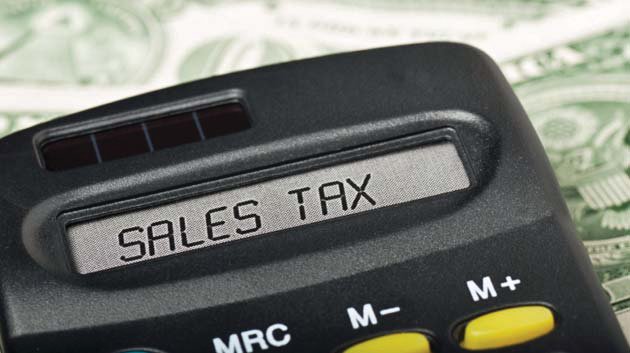When the pandemic forced brick-and-mortar businesses to close or limit in-person sales, those with no ecommerce platform struggled to stay solvent. Almost overnight, selling online became essential for all sorts of brick-and-mortar businesses, from grocery stores to restaurants to retailers of books and bikes. But in-store shopping is making a comeback.
More than half of consumers surveyed now prefer to find new products in-store rather than online, according to a new report by 5WPR. They enjoy speaking with sales people, getting their hands on products, and simply basking in the in-store ambiance that was closed to them for a time due to COVID-19. Likewise, more than 75% of U.S. adults are comfortable dining out.
This rekindled love affair with brick and mortar may be why ecommerce’s share of retail has slipped over the last year and why store openings are on the rise. It could explain why brick-and-mortar sales outpaced online sales in March 2022, for the first time since the spring of 2020. Suddenly, it’s not hard to believe 72% of U.S. retail sales will occur in brick-and-mortar stores in 2024, as Forrester predicts.
Even digital natives are falling for brick and mortar. Eyeglass revolutionary Warby Parker already has approximately 160 stores and plans to open 40 more. Wayfair is opening three stores this year so it can meet customers “wherever they are on their shopping journey.” Bob Sherwin, Wayfair’s chief marketing officer, says their new physical stores will “bring our brands to life in a new way.”
You certainly can do a lot in brick-and-mortar stores that you simply can’t do online. If you sell sofas, customers can sit on them. If you sell shoes, they can meet the feet. But that’s just the beginning. Dick’s House of Sport, an offshoot of Dick’s Sporting Goods, has a batting cage, a climbing wall, a putting green, a running track, and a turf field where customers can try out new equipment.
Retailers that treat their brick-and-mortar store as an extension of the online store — and vice versa — are best able to meet customers where they are. Buy online, pickup-in-store services, and buy online, return-to-store services put customer needs first. So do retailers that facilitate online sales for in-store customers when desired items aren’t available on-site; instead of advising customers to “find it online,” omnichannel retailers can order goods for customers then and there.
However, blending online and in-store selling can complicate tax compliance for retailers in a number of ways. Here are four of the most common.
4 ways selling online can complicate compliance for brick-and-mortar retailers
1. Buy online, pickup in store. Ecommerce sellers that ordinarily ship directly to consumers typically program point-of-sale (POS) systems to calculate sales tax based on the ship-to address. An ecommerce seller with a brick-and-mortar presence needs to ensure tax is properly assigned if the consumer buys online and picks up in a store. In most states, sales tax rates are based on the location where the consumer takes possession of the goods. If that’s the location of a brick-and-mortar store, the POS should reflect that.
2. Buy online, return to store. Similar complexities arise when a consumer buys something online but then returns it to the store, either for a refund or an exchange. Retailers need to ensure they refund the sales tax that was collected (provided they can; some states don’t provide sales tax refunds if too much time has passed). If a customer is making an exchange and picking up the new purchase in the store instead of having it shipped to their address, the retailer needs to ensure the proper amount of tax is collected.
3. Economic nexus. Thanks to the 2018 U.S. Supreme Court decision in South Dakota v. Wayfair, Inc., it’s now possible for a retailer to establish a sales tax obligation in states where it has no physical presence. Economic nexus laws base a sales tax collection obligation on a remote retailer’s sales into a state, so some brick-and-mortar retailers that started selling online to survive COVID-19 restrictions may now have customers — and economic nexus — in one or more different states. That said, all states also provide an exception for businesses whose sales into the state remain under a certain threshold; learn more in our state-by-state guide to economic nexus laws.
4. Marketplace sales. Marketplace facilitator laws make marketplace facilitators liable for the tax due on third-party sales. However, they don’t necessarily eliminate all sales tax obligations for third-party (i.e, marketplace) sellers. Some states require marketplace sellers to register and file returns even though the marketplace facilitator is responsible for collecting and remitting the tax. Furthermore, having inventory in a marketplace warehouse or fulfillment center can give individual sellers a physical presence — and therefore nexus — in another state. Brick-and-mortar retailers that sell through marketplaces therefore need to be aware of the subtleties of marketplace facilitator laws.
Automating compliance tasks can help brick-and-mortar retailers thrive in new situations
Given the convenience and rapid adoption of online shopping, a lot of us may once have thought brick-and-mortar retail would go the way of the rotary phone. It hasn’t, but that doesn’t mean it shouldn’t evolve.
====
Gail Cole is a Senior Writer at Avalara. She’s on a mission to uncover unusual tax facts and make complex laws and legislation more digestible for accounting and business professionals.
Thanks for reading CPA Practice Advisor!
Subscribe Already registered? Log In
Need more information? Read the FAQs
Tags: Sales Tax





